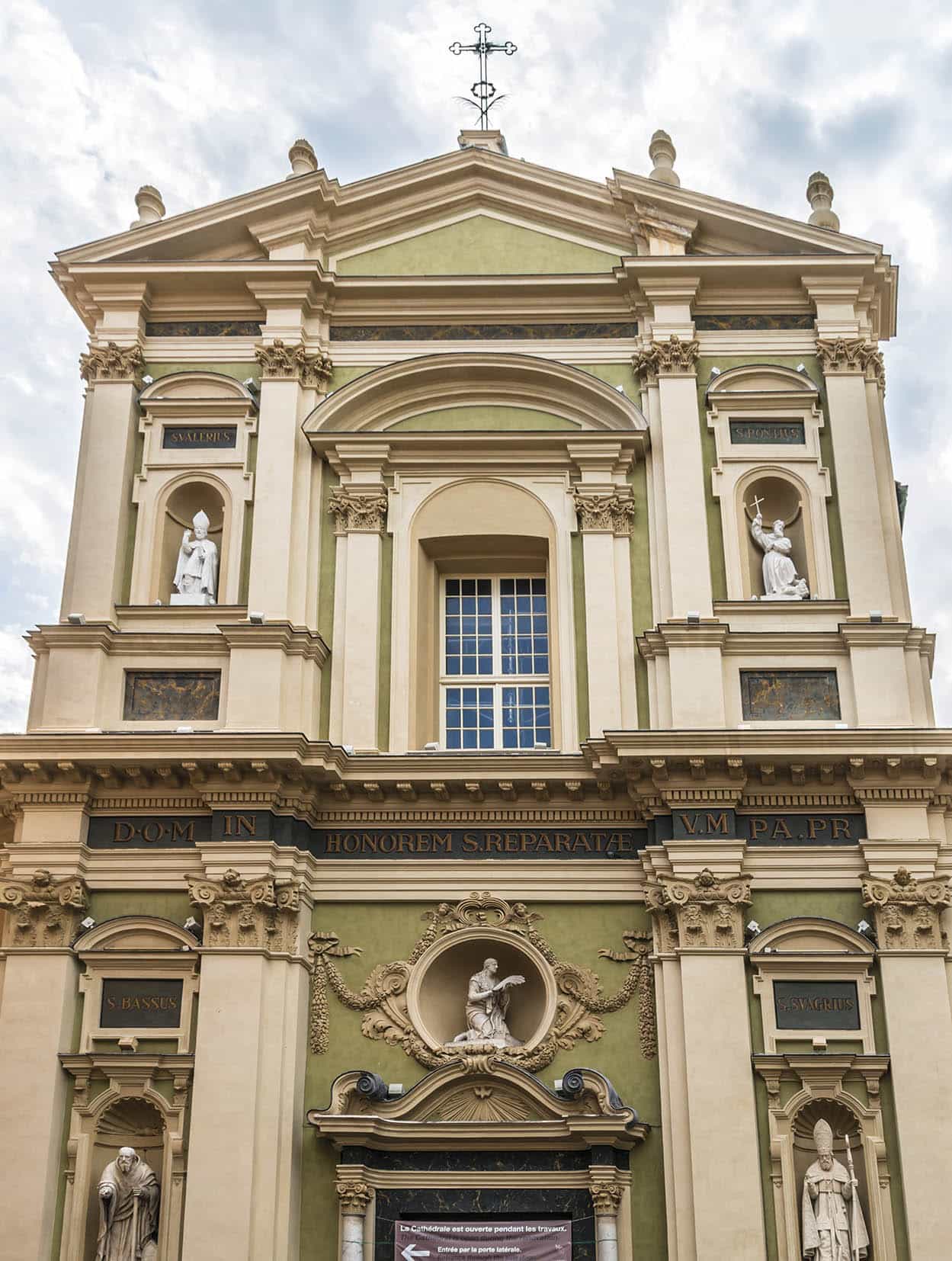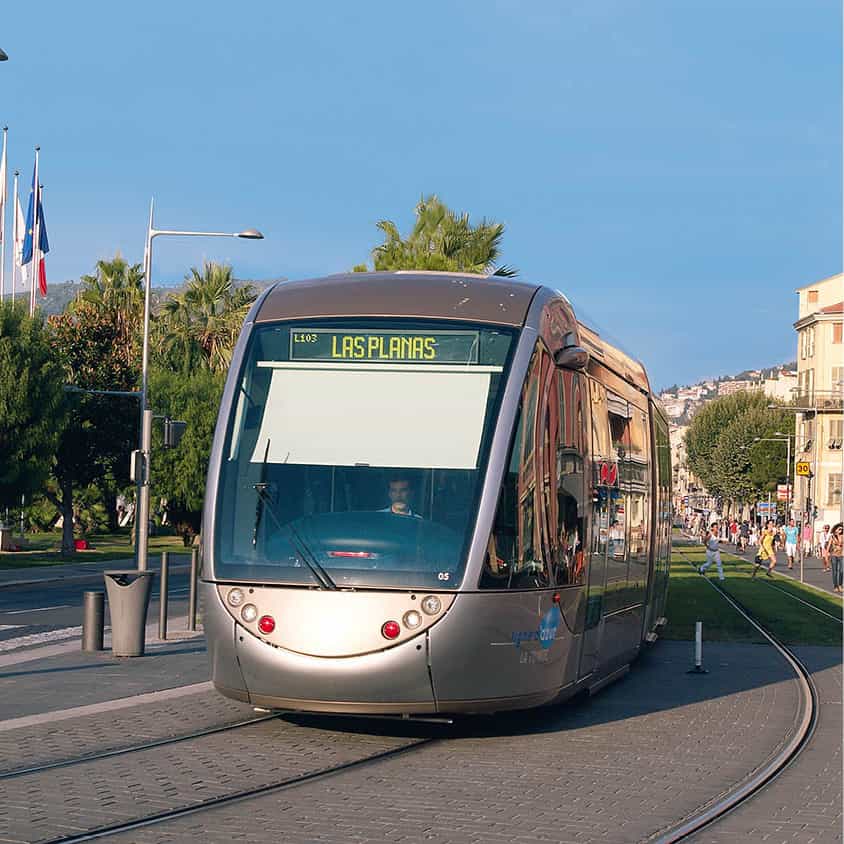Nice, Cannes, Monaco. The three names alone evoke many of the myths of the Côte d’Azur, each endowed with grandiose architecture and spectacular natural settings: the Baie de Cannes with the backdrop of the red Estérel mountains to the west, Nissa la Bella (Beautiful Nice) sitting on the glorious curve of the Baie des Anges, or the crazy piled-up tower blocks of Monaco, clustered between sea and the white limestone crags of the Alpine foothills.
The gentle Mediterranean climate made the French Riviera a magnet for the aristocratic winter visitors of the Belle Epoque, and its quality of light attracted Matisse, Picasso, Bonnard, de Staël and countless other artists during the 20th century. Today, mild sunny winters interspersed by just a few chilly days, crisp spring sunlight and the guarantee of hot summers with an azure-blue sea continue to draw tourists from the world over.
These are active year-round cities. Nice is the administrative capital of the Alpes-Maritimes département, with a dynamic cultural scene, a growing university, a large services sector and a nearby hi-tech science park at Sophia Antipolis. Cannes glories in film-star kudos yet resounds to a busy congress schedule that is fuelled by a non-stop succession of TV producers, music industry magnates, property developers and experts in all things luxurious (the luxury shopping, tourism and yachting industries all descend here for their trade fairs). Monaco’s casinos now merely play a supporting role to the profits generated by luxury spas and financial and banking services.
Architectural Heritage
All three cities have an architectural heritage begging to be discovered. The late 16th- and 17th-century expansion of Nice below the Colline du Château gave Vieux Nice pretty much the Italianate Baroque face it still has today, with pastel-coloured campaniles, imposing Genoese-style palaces, such as Palais Lascaris, and richly decorated churches, like the Cathédrale Sainte-Réparate, the Gésu and the Miséricorde and Sainte-Rita chapels, where relatively sober facades hide interiors awash with the carving, stucco and fake marble, sculpted saints and cherubs, sunbursts and barley-sugar columns that marked the Catholic Counter-Reformation.

Cathédrale Sainte-Réparate in Nice
Shutterstock
Above all, the late 19th and early 20th centuries shaped the architectural flavour of the cities, when the Riviera developed as a chic winter destination for the European aristocracy. The Belle Epoque was marked by eclectic decoration – neo-Gothic, neo-Renaissance, neoclassical and neo-Louis XIII were all utilised in banks, hotels, casinos, villas and churches. The winter gardens of Hôtel Hermitage in Monte Carlo and the Art Deco facade of the Palais de la Méditerranée in Nice give today’s visitors a hint of what life was previously like, at least for the wealthy, in the cities’ heyday.
Cities of Contrast
Perhaps part of the appeal of all three destinations and one of the reasons they continue to fascinate are their apparent paradoxes. Palatial seafront hotels contrast with the charm of narrow village streets; luxury yachts drop anchor alongside the few remaining pointu fishing boats; shop windows displaying diamond necklaces contrast with the stalls at daily food markets overflowing with local produce.
Nice combines all the allure of an elegant seaside resort with the urban pulse of a working city. With a population of 344,000, it is France’s fifth city and heart of a conurbation of nearly 1,000,000, with Roman remains, fine architecture, world-class art museums, wide-ranging shops and a vibrant culinary scene. Long the capital of the quasi-independent Comté de Nice, later a cosmopolitan winter destination, Nice offers the charm of the narrow ruelles of its Old Town and the elegance of the planned streets of the new. In Cannes, the département’s third city (after Nice and Antibes), with a population of over 73,000, an undeniably snobby aspect of extortionately priced beaches and posey restaurants coexists with the more popular charm of its covered market, the Provençal village atmosphere of Le Suquet and the democracy of the evening stroll along La Croisette.
In the city of Monaco the fascinating modernity of skyscraper architecture and daring land reclamation schemes (the principality has grown in area by 25 percent since World War II) contrasts with the seeming anachronism of one of the world’s tiniest monarchies: ostensibly a constitutional monarchy since 1911, signs of royalty are everywhere in this highly autocratic state. The 8,800 Monégasque citizens may elect the Conseil National which consists of 24 parliamentarians every five years, but the real sense of power stays with the Sovereign Prince, who signs all ordinances and nominates (and these are subject to approval by France) the Minister of State and also five other members of government.
Image Makeover
Not everything is rosy when everyone wants to live in the sun. Urban sprawl has disfigured much of the coast. Pressure for land and flats bought by often absent tax exiles makes Monaco far too expensive for most of its employees to live there. There’s a shortage of housing, too, in Cannes, where people prefer to let flats at high prices to festival-goers, congress clientele and tourists than to the local population; while the contrasts between rich and poor are striking in Nice’s housing estates and the villas of Mont Boron.
But Nice is undergoing a renaissance. After a period at the end of the 20th century when it was stricken by its reputation for financial corruption, prostitution rings, an association with far-right politics and an image as the dowager of the Riviera, Nice has emerged in a refreshed mood, the population rejuvenated by a growing number of students and the international set who have colonised Vieux Nice. Stimulated by low-cost flights and the influx of pleasure-seekers from the east, Nice once again has the sort of cosmopolitan feel it had in the Belle Epoque, even if it is no longer the playground of the aristocracy. The urban fabric, too, is experiencing a renewal: streets have been cleaned, buildings are being renovated and a new sense of civic pride was symbolised by the repaving of place Masséna for the opening of the T1 tramway line in 2007. Part of the T2 line was inaugurated in mid-2018 and its remaining part is scheduled to start operating in mid-2019. The T3 and T4 lines are also planned.
Monaco, too, is trying to change its image. Somerset Maugham, who owned a house at Saint-Jean-Cap-Ferrat, called the principality ‘a sunny place for shady people’, and after the ignominy of its being put on the OECD blacklist of tax havens, Prince Albert II has brought in a new team of councillors and vowed to make banking practices more transparent.
A Greener Future
Perhaps the element that most typifies the new century is environmental awareness. In Monaco, Albert II has set up the Prince Albert II Foundation (www.fpa2.com) to protect the environment and encourage sustainable development in both Monaco and the rest of the world through funding a wide range of projects, one of which is to protect the endangered Bluefin tuna – you won’t find it on any restaurant menu in the principality. On the initiative of Christian Estrosi, mayor of Nice since 2008, a territorial project called ‘Eco-Vallée’ was in the pipeline, however it was sadly killed off in 2017, but will hopefully be rekindled in the future.
Cannes now also has a wide-ranging charter for sustainable development, from protection of the natural spaces of the Iles de Lérins and La Croix des Gardes to stabilisation of the beaches, water conservation, energy-efficient street lighting, new cycle lanes and electric buses.

Nice’s tramway
Sylvaine Poitau/APA Publications